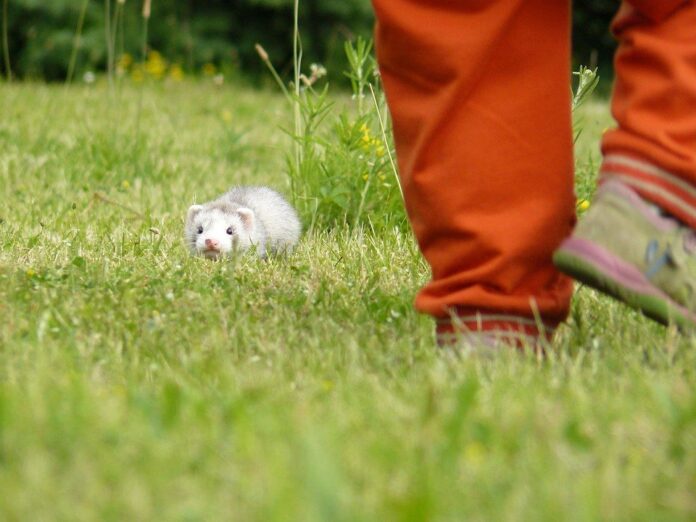The Future of Ferret Food: Raw Nutrition Personalization and Safety
Introduction
Ferrets are unique pets that have specific dietary requirements to maintain their health and well-being. In recent years, there has been a growing trend towards feeding ferrets a diet that closely resembles what they would eat in the wild. Raw nutrition has become increasingly popular among ferret owners, as it is believed to provide the most natural and balanced diet for these carnivorous animals. This shift towards raw nutrition has sparked a new wave of innovation in the pet food industry, with companies focusing on personalized and safe options for ferrets.
The Rise of Raw Nutrition
Raw nutrition for pets, including ferrets, involves feeding them a diet that consists of raw meat, bones, and organs. This type of diet closely mimics what ferrets would eat in the wild, as they are obligate carnivores that require a diet high in animal proteins and fats. Raw nutrition is believed to provide numerous benefits for ferrets, including improved digestion, healthier skin and coat, and increased energy levels.
As more pet owners become aware of the benefits of raw nutrition, the demand for raw pet food products has been on the rise. According to industry data, the raw pet food market is expected to grow at a CAGR of 7.5% from 2021 to 2026, reaching a value of $8.6 billion by the end of the forecast period. This growth is driven by increasing consumer awareness of the importance of nutrition for pets and a shift towards more natural and wholesome diets.
Personalization and Customization
One of the key trends in the pet food industry is the focus on personalized and customized nutrition for pets. This trend is particularly relevant for ferrets, as their unique dietary requirements can vary based on factors such as age, activity level, and health conditions. Companies are now offering personalized meal plans and tailored diets for ferrets, allowing pet owners to meet their pet’s specific nutritional needs.
Personalized nutrition for ferrets typically involves a consultation with a pet nutritionist or veterinarian to assess the pet’s dietary requirements and create a customized meal plan. This may include a combination of raw meat, bones, organs, and supplements to ensure that the ferret receives all the essential nutrients it needs to thrive. By offering personalized nutrition options, companies can cater to the individual needs of ferrets and provide a more tailored approach to pet nutrition.
Safety and Quality Assurance
When it comes to raw pet food, safety and quality assurance are paramount. Raw meat can carry bacteria and pathogens that can be harmful to pets if not handled and prepared properly. To ensure the safety of raw pet food products, companies must adhere to strict quality control measures and food safety standards.
Many raw pet food companies now use high-pressure processing (HPP) and other food safety techniques to eliminate harmful bacteria and pathogens from raw meat products. HPP involves subjecting the raw meat to high levels of pressure to kill off bacteria without compromising the nutritional integrity of the food. This process helps to ensure that raw pet food products are safe for consumption and free from any harmful contaminants.
Industry Insights and Key Players
The raw pet food industry is a rapidly growing sector within the pet food market, with several key players leading the way in innovation and product development. Companies such as Primal Pet Foods, Stella & Chewy’s, and Bravo Pet Foods are known for their high-quality raw pet food products that cater to the unique dietary needs of pets.
Primal Pet Foods, for example, offers a wide range of raw frozen and freeze-dried pet food products that are made with high-quality ingredients and free from artificial additives. Stella & Chewy’s is another popular brand that specializes in raw frozen and freeze-dried pet food products, including meal mixers, patties, and treats. Bravo Pet Foods is known for its raw diet options for pets, including raw meaty bones, organs, and supplements.
Conclusion
The future of ferret food lies in raw nutrition personalization and safety. As more pet owners seek natural and wholesome diets for their ferrets, the demand for raw pet food products is expected to continue to grow. By focusing on personalized nutrition options and ensuring the safety and quality of their products, companies can meet the evolving needs of ferret owners and provide a more tailored approach to pet nutrition. With the right combination of innovation, quality assurance, and personalized nutrition, the future of ferret food looks bright and promising.




